SCOTTISH CIDER REVOLUTION

By Rose Murray Brown MW Published in The Scotsman 5 February 2022
There are now 15 artisan cidermakers spread across Scotland reviving quality cider north of the border.
One of the most intriguing is Deeside-based cidermaker Seidear, set up by German-born Christian Stolte. Stolte came to Aberdeen to work in the oil business and began making cider from his own garden apples. Since 2019, with the oil downturn, he has focused on his Kingcausie-based cidery making 3,500 bottles of sparkling cider using only Scottish apples.
So what is so special about Scottish apples? “They get more light during the growing season than southern apples – and are often smaller and more acidic”, says Stolte.
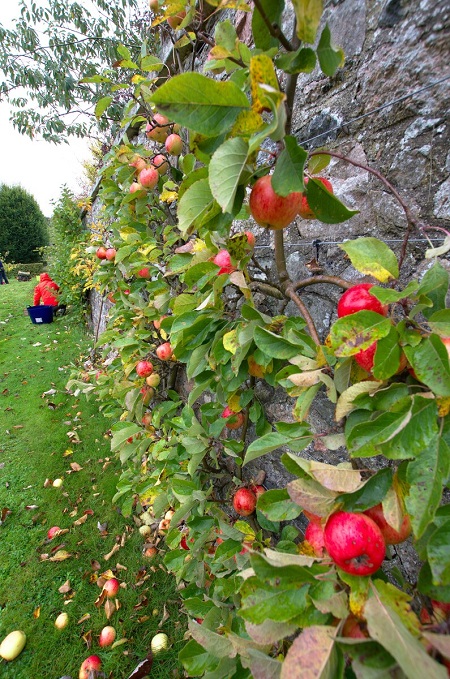
Scottish cidermakers have plenty of challenges in a chilly climate from coping with variable crops to managing high acid levels in their cider, but one benefit is that cool temperatures aid slow fermentation.
“There are also not many cider apple trees in Scotland, most are culinary or dessert apples – but our cherished walled gardens have lots of old varieties grown as espaliers, notably Cluny, Gordon, Fraser, Forbes and Haddo House. Sadly orchard sources are as unreliable as harvests”, he says.
He also makes cider for community gardens like Ellon Castle Gardens and works with The National Trust converting their orchard crops to cider.
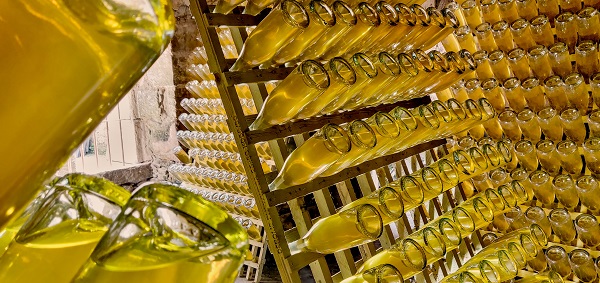
Stolte claims to be the first to have made sparkling cider in Scotland using the ‘traditional method’, the same method used in Champagne to create fizz with second fermentation in bottle. “I like bubbles in my cider and this gives fine bubbles and brioche notes”, he says.
He uses the ancient ‘keeving’ method popular in Normandy for naturally sweetened cider. “It helps break the acidity and lock in the fruitiness of Scottish apples”, he says. But one thing Stolte does not like is cider in barrels.
Maturing cider in old barrels is a major feature at new Scottish cidery, Naughton Cider. Champagne fanatic Peter Crawford is keen to apply winemaking techniques to making cider and perry to enhance texture and structure.
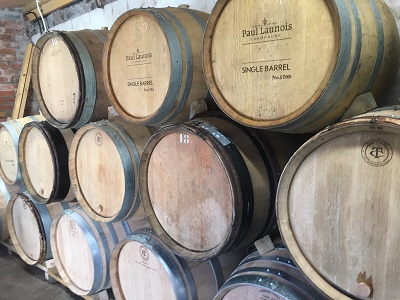
“I don’t drink cider”, admits Crawford, “but I am interested to see how barrel maturation and the traditional method can improve it”.
When I visited him last month near the River Tay in northeast Fife, we sampled ciders and perries from single varieties straight from his 26 old Champagne barrels stacked in a shed alongside his C16 estate walled garden.
“I find cidermakers use barrels that don’t compliment the fruit”, he says. “I believe a lot can be done to increase mid-palate depth, texture and sweetness with better fruit selection, increased use of sensible oak and lees aging. I am looking for cider with aromatics, elegance and purity, using oak in a delicate way”.
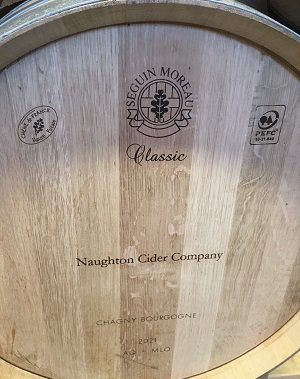
With the help of renowned Champagne-maker Christophe Constant, who visits during bottling, Crawford uses the traditional method to add fizz to his cider and perry, riddling bottles in his old game larder on the estate. His first sparkling attempts in 2019 and 2020 are light elegant oak-aged ciders from Scottish fruit and looking very promising – 2019 will be released in the next few months.
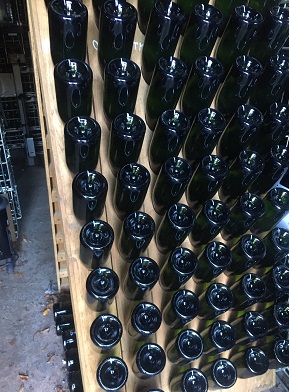
Setting up a cidery is not a cheap business. Crawford has spent £80,000 on imported equipment, bottles from Champagne and planting new trees. In 2018 he planted 700 apple and pear trees with plans for another 600 culinary and cider apple trees, which will be ready in 5 years.
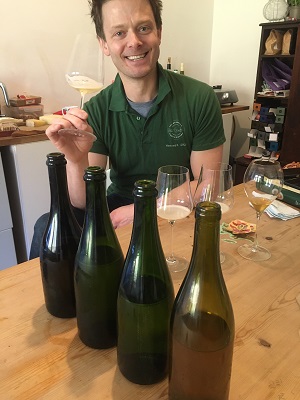
“It is a risky business growing apples in Scotland with harvests varying from bumper crops like 2020 to very small 2021”, he says.
The real threat is the dreaded May frost, a major concern for the most northerly cider orchards in Europe. Ryan Sealey of Caledonian Cider in Conon Bridge, Black Isle, who calls himself a ‘freedom fighter for full juice and wild ferment’, has made cider for seven years from Highland fruit.
“2019 was an absolute killer for us…with three frosts in the beginning, middle and end of May which wiped out most of the blossom…but a good percentage of what makes cider interesting is down to our weather. It is also not uncommon in winter for the juice to freeze solid for a few days”, says Sealey.
Perhaps there is potential for making Scottish ice-cider, a style very successful in northern Sweden. Watch this space
FULL JUICE CIDERS
 Dry Sparkling: ‘LAST20’ 2020 Seidear (6.4%) ***STAR BUY***
Dry Sparkling: ‘LAST20’ 2020 Seidear (6.4%) ***STAR BUY***
£17-£18 Cornelius Wine & Brauhaus, Edinburgh; Good Spirits Co & Wee Beer, Glasgow; Aeble Cider, Anstruther
Yellow gold, ripe fleshy fruit aromas, creamy mousse, sweet sour notes with tart apple mid-palate, but overall good balance and fine length; from mixed variety Scottish-grown red apples.
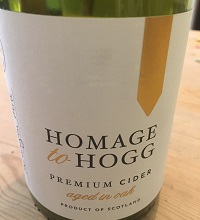 Dry Still: HOMAGE TO HOGG 2020 Naughton (6.9%)
Dry Still: HOMAGE TO HOGG 2020 Naughton (6.9%)
£14.95 Luvians; St Andrews Wine; Aeble
Named after C19 pomologist Dr Robert Hogg. Toffee, leathery, orange marmalade notes, light tannins, quite vinous with good fresh finish; from Oxfordshire-grown single variety Yarlington Mill, aged in old Champagne barrels.
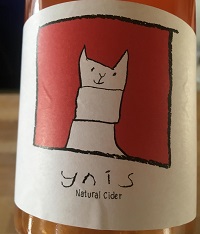 Dry Sparkling: YNIS Caledonian Cider (6%)
Dry Sparkling: YNIS Caledonian Cider (6%)
£9-£10 Aeble; Cork & Cask; Cornelius Wine
Cider meets whisky in this smoky robust fizz with sweet rich undertones and a striking burnished deep orange colour – made from Scottish-grown Yarlington Mill variety, using the keeving method, wild fermented and 12 months maturation in rare Sutherland whisky cask.
Join Rose’s Grenache v Garnacha wine tasting on 10 February in Edinburgh www.rosemurraybrown.com
wine tastings
The perfect gift for the wine enthusiast in the family. Rose does In-person tastings too.
cellar advice
Rose does cellar valuations for private clients, valuations for insurers & bespoke portfolio management.
Related stories
March 31, 2024
By Rose Murray Brown MW Published in The Scotsman 30 March 2024 On 2 February 1659, the first wine made from grapes grown in South Africa was crafted by the Governor of the Cape, Jan van Riebeeck. He had planted vines four years earlier in the Company’s Garden near Cape Town from cuttings imported from France. Van Riebeeck’s first
March 24, 2024
By Rose Murray Brown MW Published in The Scotsman 16 March 2024 Heatwaves and bushfires were very much on the agenda when I visited Chile last month as winemakers prepared for their 2024 harvest in blistering heat and drought, with a plume of smoke from the devastating fires lingering over coastal hills. Heat and drought are the greatest challenges
March 23, 2024
By Rose Murray Brown MW Published in The Scotsman 9 March 2024 I have two glasses of Malbec in my hands from the same high-altitude vineyard in Uco valley in Argentina. I am in the Catena Institute of Wine in Mendoza with winemaker Agustin Silva. He has asked me to taste the two wines, both from the 1500m high



